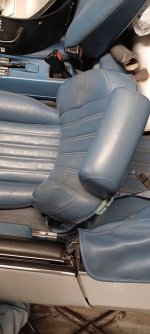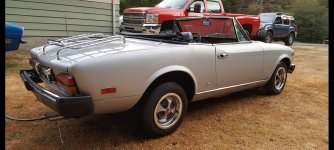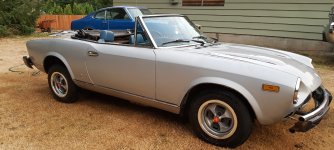Sorry to hear of your ordeal in doing what
should have been a fairly straightforward task

I doubt the belt tolerances were off, the types of belt I've seen being made use a reinforcing fibre (like a string) that is wrapped repeatedly around the belt until it has reached the required width, perhaps someone listed it as fitting all engines of a certain make when it doesn't. It's also possible that there were changes to some parts during production of your car (these would be shown in the parts manual showing the engine or chassis number when the changes took place) or perhaps someone fitted a different pulley to one of the units.(e.g. replacement alternator fitted that was supplied with a pulley already fitted).
[ I once did a cylinder head rebuild (timing belt failed > bent valves) on a car visiting Ireland from France, the crankshaft V pulley was slightly smaller than the original which wouldn't have been a problem as regards changing the timing belt, except it had no timing mark (no idea what it came off but the owner said the car had sustained front-end crash damage and was repaired in France...]
Sometimes the choice of the last pulley to fit the belt over can make a difference, I've noticed that some water pump or alternator pulleys grooves have deeper sides than the crank pulley, so I'd fit the belt over the crank pulley last (shouldn't make much difference though).
Belts can be measured or compared if unsure you've been supplied with the correct one. In the 'good ol' days', auto factors often had a device for measuring belt size - it consisted of 2 half round discs over which the belt was fitted and then the belt was tensioned by pulling the moveable half disc and the belt size could be read off the device scale.
Iirc, the number of the original Fiat belt size (e.g. 850 x 9.5) indicates the internal diameter in mm and the 2nd number is the max belt width in mm. I've encountered some cases where an aftermarket supplier might show a 9mm belt as being correct instead of 9.5mm, afaik the narrower belt will sit lower in the pulleys possibly using up more or all of the available adjustment, a wider than correct belt will likely sit higher in the pulley grooves and be difficult or impossible to fit. Of course different manufacturers have different numbering systems, I haven't seen a belt marked simply with the size in years...
I compare belts by placing both original and replacement belts over a large round item (e.g. socket or pipe ) held in a bench vice and the tension both belt using a length of pipe and then compare them. Modern belts don't really stretch due to the reinforcing fibres mentioned above, but the sides of the belt can wear resulting in the belt requiring re-tensioning after some initial use but the tension should then remain correct for a considerable time.
[Recently, I was about to renew a 'PolyVee' (serpentine) belt, part supplier's website showed 2 belt lengths - one for cars with ac, the other for cars without ac. I ordered the shorter belt i.e. for car without ac. Fortunately, I did a comparison before trying to fit it and found the new belt was approx. 25mm shorter than the original. Did a further internet search among other parts suppliers and found there were actually 2 shorter belts specified for non ac cars, 1 for U.K. built cars and the other (25mm longer) for Japanese built cars. My car was Japanese built. By checking the belt first, I saved myself time and aggravation plus was able to return for refund the incorrect belt (would not have gotten a refund if I had messed up/ marked the belt in trying to get it to fit.]




